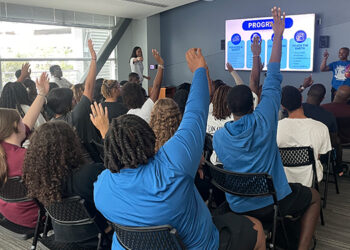Safety should be of the utmost importance in every campus recreation department. One of the most important measures to take is being prepared for a health emergency.
Any health-related incidents — heart attacks, serious injuries, and severe illnesses — can be a bit alarming and very unpredictable, so recreation centers should have the right protocols in place to safely and effectively handle any situations that arise.
Campus Rec spoke with Ron Lee, the director of campus recreation and wellness at the University of Kentucky about the importance of health emergency protocols and how to implement these programs.
CR: What protocols do you have in place for health emergencies?
RL: We have an emergency action plan for all our facilities.
CR: Are there any challenges in implementing safety protocols?
RL: None that can’t be overcome. Our department has a risk management committee that is made up of several professional staff members. They do a tremendous job in reviewing all of our safety procedures annually. In addition, they vet any new safety protocols or procedures with the appropriate departments on campus — police, risk management, legal, etc.
CR: How do you educate your staff on these procedures?
RL: We have all our risk management information on a common server our staff can access at any time. The risk management committee keeps this information current.
CR: How do you educate students on these procedures?
RL: The emergency action plan is part of our student staff training at the beginning of each semester.
CR: Do you have any advice for other campus rec departments?
RL: I would recommend developing a risk management committee in your department if you don’t already have one. This has more staff actively participating in the development of risk management policies and helps ensure all areas of your department are implementing and following the same safety protocol and procedures.










